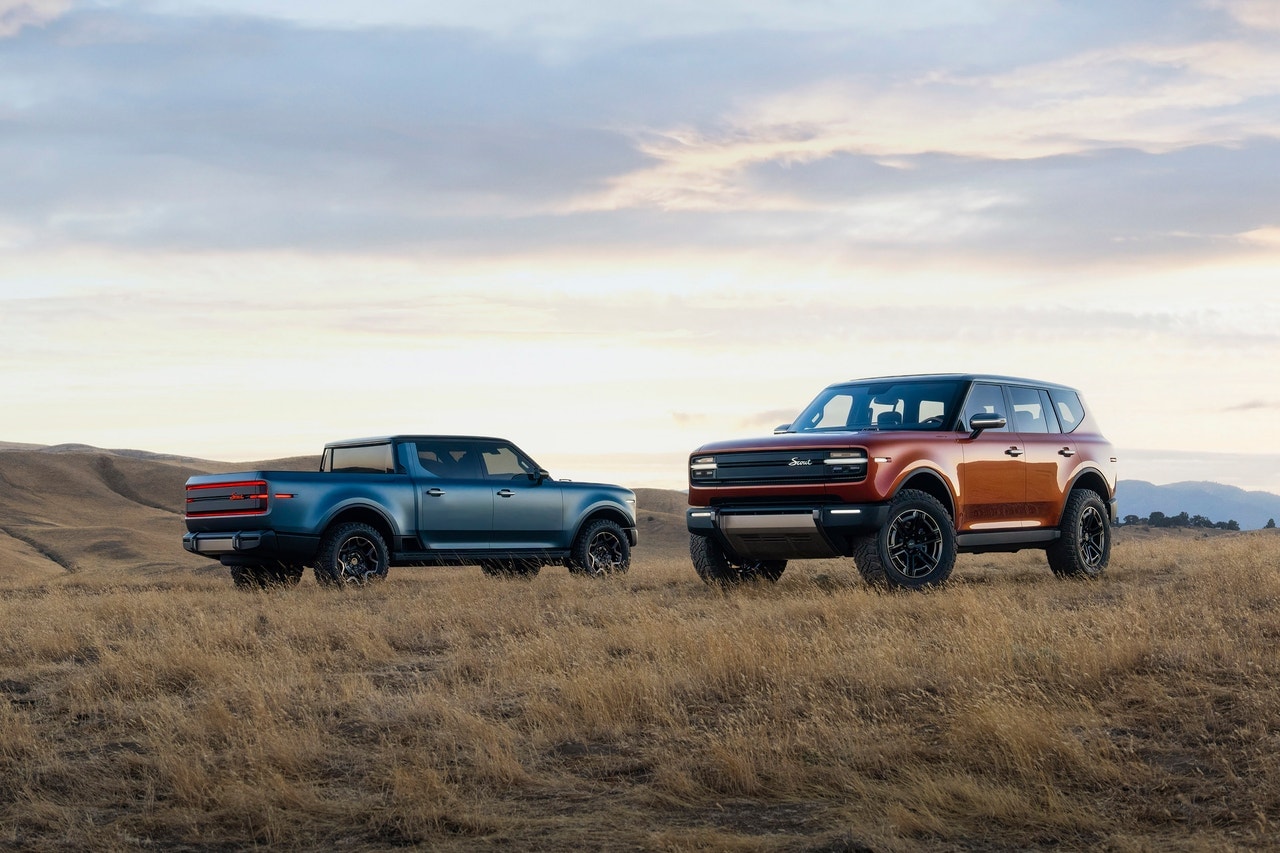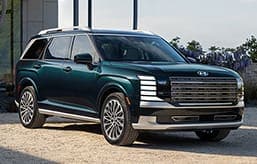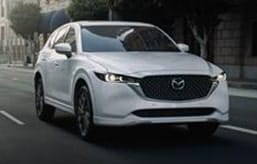- The Scout Terra and Traveler come with a gas-powered generator for more range.
- Scout's solid-rear axle allows for more frame-twisting articulation.
- The optional steel-sprung suspension is simpler and likely more reliable.
Why the Scout Terra and Traveler Might Be Better Than the Rivian R1S and R1T Off-Road
Here's a closer look at what Scout Motors offers on its new pickup and SUV, and why it gives these vehicles an advantage off-road
The Rivian R1T and R1S are currently the best-performing off-road electric vehicles you can buy — but that might be changing soon. Scout just revealed the electric Traveler SUV and Terra pickup truck. And while we haven’t driven either, the spec sheets reveal some key details that might give Scout the off-road edge.
The Scouts have more range, but there’s a catch
Scout Motors says its vehicles should have 350 miles of electric range, while Rivians can go more than 400 miles depending on how many motors they have. But here’s where Scout has an advantage: The Traveler and Terra will be available with a gas-powered range extender that brings the total driving distance up to 500 miles.
Basically, the Scouts can be equipped with a small engine that acts as a generator. You put gas in the tank, but the vehicle’s wheels are moved by the electric motors. That means you still get Scout’s projected 1,000 lb-ft of instant torque.
Why is this a big deal? It’s not because of the extra 150 miles of range. It’s because there aren’t many charging stations out in the middle of nowhere, but in the Scouts, drivers can carry fuel with them to power the generator, making it easy to do multiday off-road treks. For example, I regularly drive in Baja California, Mexico, where there are very few charging stations but lots of places to buy gas. The Scout is an EV I’d totally feel comfortable taking south of the border.
Matters of articulation
The Rivians have independent front and rear suspensions, which give them a comfortable highway ride. But this hurts the R1S and R1T off-road compared to rivals with proper solid axles that provide better wheel articulation. Scout takes a nice middle-of-the-road approach with an independent front suspension but a solid axle at the rear. This setup should hopefully provide a best-of-both-worlds combination of smooth on-road ride and great off-road prowess.
However, the Scout gets extra brownie points because of its disconnecting front sway bar. This feature allows the front wheels to articulate to their maximum range. No, it won’t be as robust as, say, a Jeep Wrangler with a solid front axle, but it should allow the Scouts to keep their front tires on the ground more often than the Rivians. Sometimes, that little bit of extra stability is all you need to get up and over an obstacle.
Sometimes an old-school suspension is better
The Rivian R1S and R1T come with an air suspension, and this certainly has its place in an off-road EV — it’s nice to be able to lower the vehicle’s ride height on the freeway for better overall efficiency. Rivian uses a hydraulic cross-linked suspension combined with air springs at all four corners, and while this works really well, it’s also very complex. I once pinched a hydraulic line on a Rivian R1T while off-roading and lost all the fluid, at which point the truck went into its lowest ride height setting, set itself to front-wheel drive and wouldn’t go above 35 mph. It took a special pressurizing system and three Rivian techs all night to get the truck fixed.
Scout’s Traveler and Terra have an optional steel-sprung suspension, which isn’t as modern by comparison but is potentially not as finicky for off-roading. Sometimes simpler is better.
Locking diffs for the win
Rivian relies on an intricate traction control system in the R1S and R1T, and while I haven’t heard complaints, there’s no substitute for proper locking differentials to give you low-range traction when the going gets tough.
For folks who really want to go rock crawling, the Scout can be had with tires as big as 35 inches, an inch bigger than what’s available on the Rivian. The Traveler and Terra I saw at Scout’s debut event in Tennessee rolled on 20-inch wheels, but it looked like you could maybe fit 19-inch wheels on, allowing for beefier tires.
It’s the little things
Scout’s truck and SUV have some really thoughtful touches. There’s a row of auxiliary switches to the left of the steering wheel to make it easier to wire up aftermarket lights or a winch. A cooled glove box is an option, there are physical buttons for the climate controls, and I fully expect the Scout to come with Apple CarPlay and Android Auto. Rivian doesn’t offer any of that.
Oh, and the pièce de résistance is the old-school compass in a bubble just forward of the locker switches on the headliner. My granddad had one like that in his Bronco and it gives me all the nostalgic feels.
Rivian still has advantages
We don’t have full specs of the Scouts, but the Rivian R1T and R1S have shorter wheelbases, likely allowing for a better breakover angle, which is important when clearing obstacles off-road. Rivian also includes a built-in air compressor for inflating tires, and the R1T and R1S should be able to tow a little bit more too.
All I know is, I’m excited to get the new Scout Traveler and Terra off-road for a proper test — and, naturally, a proper comparison against their closest electric rivals.






.jpg) by
by  edited by
edited by